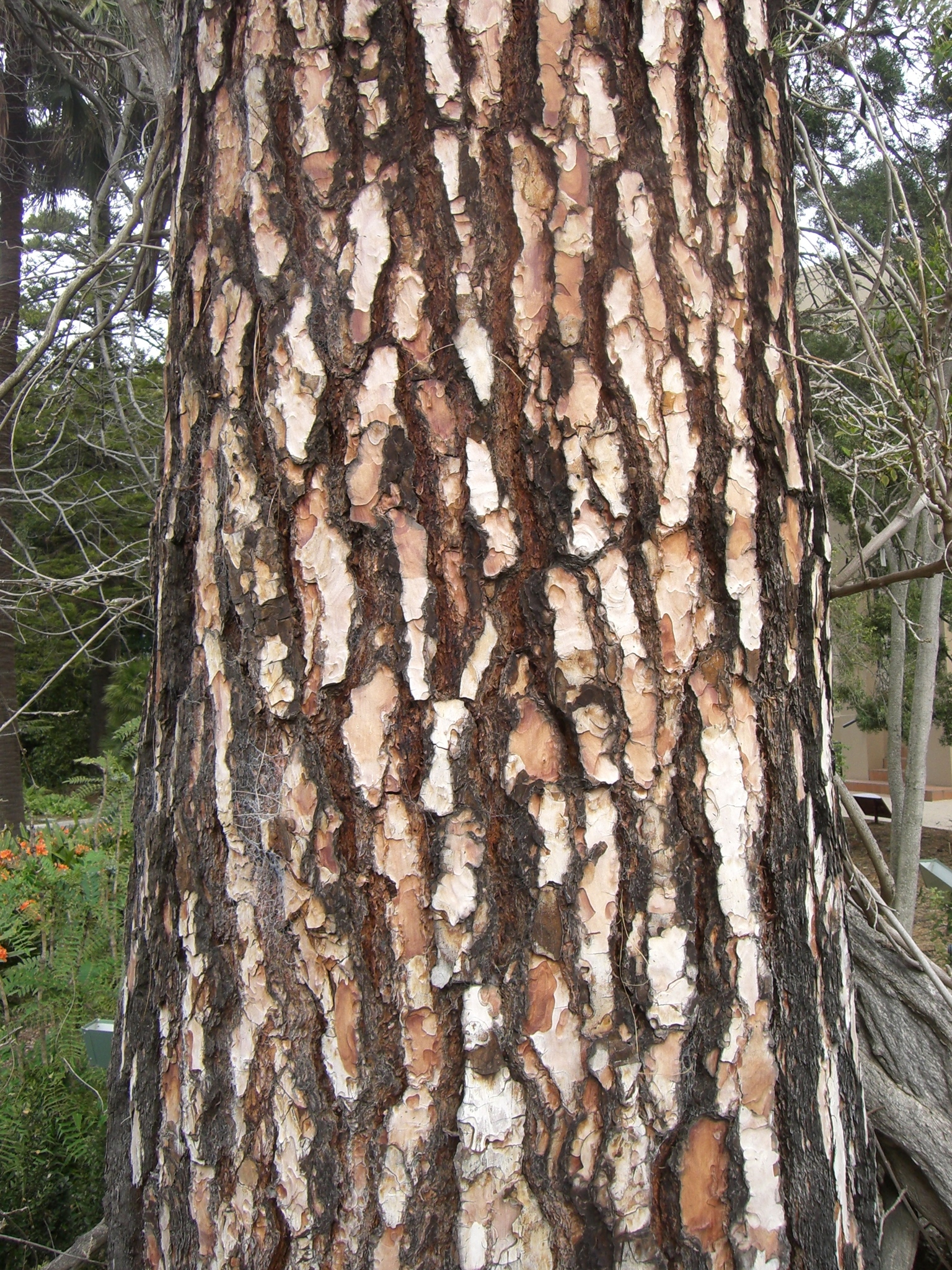
Broad-crowned or narrow tree 20-45 m tall with a straight trunk and large, spreading or ascending branches. Bark thick, dark reddish brown, deeply fissured. Buds large, ovate, pointed, with reflexed, white-fringed scales. Young shoots orange to yellowish-brown. Leaves in 3's, 15-30 cm long, slender, flexible, drooping; sheaths over 1 cm long, persistent. Cones solitary, broadly ovoid-conical, 9-20 cm long, 5-8 cm wide; scales shining, sometimes bent downwards at the base, tips rounded. Seeds 1 cm long with long wing joined to the nut.
Canary Islands. Grows naturally at alt. 1000-2000 m on the islands of Gran Canaria, La Palma and Tenerife, often in cloud forest where the long leaves condense the mist, effectively increasing the rainfall around the tree up to 4 times. Essentially a subtropical pine that grows well in Australia it will maintain a good form in low rainfall areas with poor soils and is long lived but does best in rainfall exceeding 750 mm a year. One of the few pines that sends out epicormic growth and is therefore able to regenerate after fire and respond to coppicing. Naturalised on the Cape of South Africa.
Timber strong and durable.
Straight trunk; bluish side growths near the base of the trunk; yellow shoots; large, fringed buds. Pinus roxburghii is very similar with winter buds less fringed and cone scale tips extending downwards.
SA: Adelaide (Scotch College); Hackney (in front of Athelney House, Athelney Ave; St Peters College); Mt Gambier (Blue Lake Pioneer Memorial; Bot. Gds; Umpleston Cave); North Adelaide ('Bishops Court'); Penola ('Yallum Park'); Urrbrae (Waite Agricultural Institute adjacent to house). NSW: Moss Vale (park, city centre); Orange (Lone Pine Avenue outside cemetery); Ournie (Jephcott Arboretum near old homestead site 40 m tall in 1991); Sydney (Gladesville, Gladesville Hospital c. 30 m tall; Hunters Hill, Catholic Theological Union, c. 40 m tall, exceptional; N Parramatta, Cumberland Hospital, c. 5 large trees Riverside Drive lawn c. 40 m tall; Royal Bot. Gds; Wellington (opposite pub at east end of town). ACT: ANU (Old Canberra House - S lawn ptd c. 1920); Duntroon (Officers Mess, ptd c. 1915); Mt Stromlo (trial plantation plot ptd 1915). VIC: Ballarat (synagogue, Barkly St); Beechworth (Queen Victoria Park, avenue adjacent to the Mayday Hospital building); Bendigo (Rosalind Park; White Hills Cemetery); Belgrave ('Glen Harrow'); Birregurra (Golf Course, 3 trees); Box Hill (cemetery, main entrance); Burnley (VCAH 27 m in 1989, ptd. c. 1863); Creswick (Saw-pit Gully Reserve, large grove); Fitzroy Gds; Geelong (Eastern Park); Hawthorn (Scotch College); Heidelberg (Heidelberg Park); Kew (Boroondara Cemetery; Xavier College, main drive); Malvern (Public Gardens); Korumburra (Public Park); Mildura (Deakin Ave.); Parkville (Melbourne University, Vice Chancellor's Residence, ptd 1880s); St Arnaud (Bot. Gds); Werribee (Werribee Park Estate); Williamstown (Bot. Gds). TAS Hobart (Government House; Queens Domain; Royal Tasmanian Bot. Gds).
Source: (1995). Pinaceae. In: . Horticultural Flora of South-eastern Australia. Volume 1, Ferns, conifers & their allies. The identification of garden and cultivated plants. University of New South Wales Press.

Pinus canariensis 'Pete'sPygmy'
('Angaston') Dwarf with coarse branchlets and new growth; juvenile foliage an attractive blue. Grows to about 1 m in 10 years. Witch's broom selection by Peter Nitschke, Hahndorf, South Australia; introduced early 1990s.